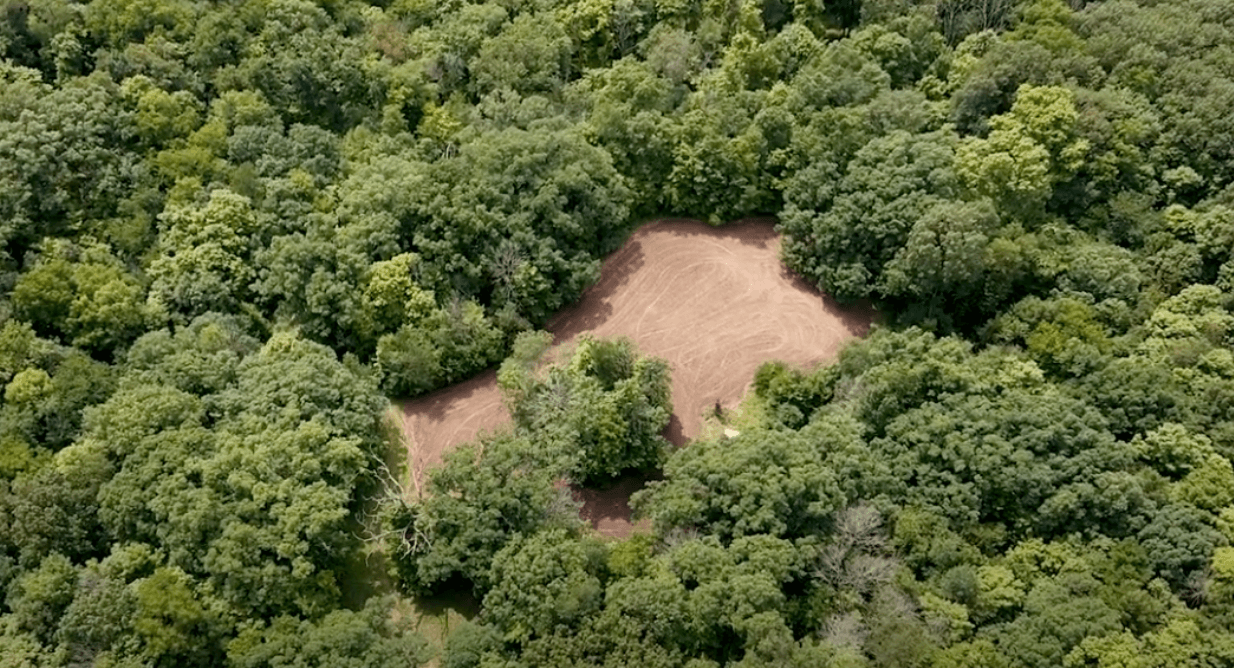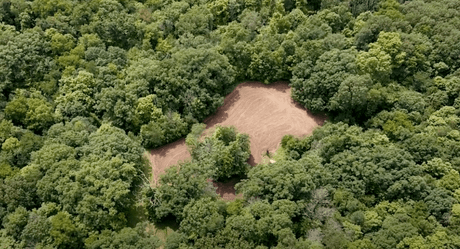Maximizing Spring Food Plots for Deer
Posted by John on 23rd Apr 2024
Maximizing Spring Food Plots for Deer
Spring is a pivotal time for deer management, as it marks the transition from harsh Winter conditions to the lush growth of the warmer months. For hunters and land managers, Spring presents an opportunity to support deer health, enhance habitat, and ultimately improve hunting success through the strategic planting of Spring food plots. In this guide, we'll dive into the essential aspects of establishing and maintaining Spring food plots to benefit deer populations and habitat quality.

Understanding the Spring Season
As Winter wanes and Spring emerges, environmental factors profoundly influence deer behavior. Bucks are recovering from the rigors of the rut, while does are preparing for fawning season. During this time, deer have heightened nutritional needs to support recovery and growth. Spring food plots play a crucial role in providing the essential nutrients deer require after a long Winter and during the critical periods of antler growth and fawn development.
Selecting the Right Location
Choosing the optimal location for Spring food plots is key to their success. Begin by assessing the existing habitat and deer movement patterns on your property. Look for areas with ample sunlight, proximity to cover, water sources, and bedding areas. Selecting sites near established deer trails can increase visibility and accessibility for both deer and hunters.
Consider also using a food plot screen blend. Our food plot screen blend allows you to grow a visual barrier around or near your food plots. This provides security for whitetails while feeding and hiding your movements to and from your stand. It was developed and tested on our hunting grounds in Minnesota over several years and under harsh conditions, so we have full confidence in our food plot screen seed. If you're looking for a plot screen for deer, this is it!
Choosing the Best Seed Varieties
When selecting seed varieties for Spring food plots, prioritize options that are high in protein, easily digestible, and palatable to deer. Popular choices include clover, chicory, alfalfa, and various legumes. Consider factors such as soil type, climate, and deer preferences when making your selection. Contact the experts here at Frigid Forage for recommendations tailored to your specific region.
Frigid Forage Spring Food Plot Blends
At Frigid Forage we have a variety of Spring food plot blends for Deer, both annual and perennial blends.
- Monster Magnet: Our Monster Magnet seed blend is unique because it provides critical nutrition and attracts the deer throughout the year. During the summer it will benefit growing bucks and nursing does, yet still provide the needed nutrition & attraction during the hunting season and cold winter months.
- Plow Down Clover: Our Plow Down Clover cover crop seed blend is a first of its kind blend of fast-growing annual and bi-annual clovers formulated to provide a green manure cover crop. It is ideal if you intend to plant a late-season annual, like Big and Beasty or Autumn Quick Plot.
- Pure Trophy Clover: Our Pure Trophy Clover seed blend is 100% clover, making it one of the best and most versatile seed blends for deer food plots. It is an equal mix of 5 different clovers (Ladino, Mammoth Red, Medium Red, White Dutch, and Alsike) that will provide a high protein food source for deer and other wildlife. The advantage of planting a clover blend is that it will thrive in a wide range of growing conditions, sun/shade, damp/well drained, clay/loam making Pure Trophy Clover is an ideal choice for almost all situations from open fields to shaded areas and woodland trails.
- Wall Hanger: Our Wall Hanger food plot seed is ideal for sandy soil. It is best planted in Spring or late Summer in lighter or sandy soil in sunny areas. It is ideal for the serious Whitetail hunter.
- Wild Game Buffet: Wild Game Buffet is our #1 selling perennial blend with clovers, alfalfa, and brassicas. It is suitable for most growing conditions, soil types, and is shade tolerant. This makes it the best food plot seed for shaded woods as it has shade tolerant perennial clovers.
Soil Preparation and Management
Before planting, conduct a soil test to assess nutrient levels and pH. Adjust soil pH as needed to ensure optimal growing conditions for your chosen seed varieties. Proper soil preparation, including tilling and fertilization, is essential for promoting seed germination and early growth. Implementing a comprehensive soil management plan will lay the foundation for healthy and productive Spring food plots.
Spring Food Plot Planting Techniques
Timing is critical when planting Spring food plots. Aim to plant early enough to allow for adequate establishment before deer begin heavily utilizing the plots. Follow recommended planting depths and spacing for your chosen seed varieties. Ensure good seed-to-soil contact to maximize germination rates. Consider incorporating cover crops or companion plants to enhance soil health and biodiversity within the plots.
Maintenance and Weed Control
Once established, Spring food plots require ongoing maintenance to ensure optimal growth and productivity. Implement weed control strategies that target unwanted vegetation while preserving desirable plants. Monitor plant growth regularly and address any nutrient deficiencies promptly. Manage deer browse pressure to prevent overgrazing and promote healthy plant regrowth.
Monitoring and Adjusting
Throughout the Spring season, closely monitor the progress of your food plots. Look for signs of successful establishment, such as vigorous growth and utilization by deer. Be prepared to make adjustments based on observed deer behavior and environmental changes. Flexibility and adaptability are essential qualities for effective deer management and habitat improvement.
Enhancing Deer Health and Habitat
Spring food plots play a vital role in supporting overall deer health and habitat quality. By providing nutritious forage during a critical time of year, Spring food plots contribute to the growth and development of deer populations. Additionally, they enhance habitat diversity, attracting a variety of wildlife species and promoting ecosystem resilience. Incorporating Spring food plots into your land management practices can yield benefits for both deer and the broader ecosystem.
Conclusion
Spring food plots represent a valuable tool for hunters and land managers seeking to improve deer habitat and hunting opportunities. By understanding the unique needs of deer during the Spring season and implementing strategic planting and management practices, you can maximize the benefits of Spring food plots on your property. Remember to prioritize proper site selection, seed selection, soil preparation, and ongoing maintenance to ensure the success of your Spring food plot endeavors. With dedication and attention to detail, you can create thriving habitats that support healthy deer populations for years to come.

